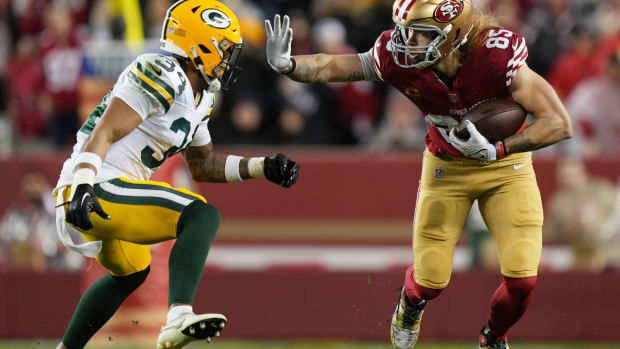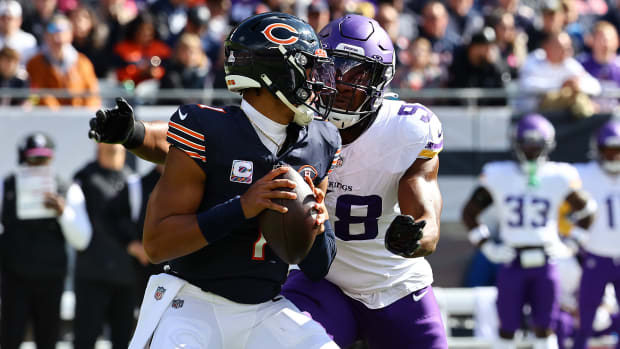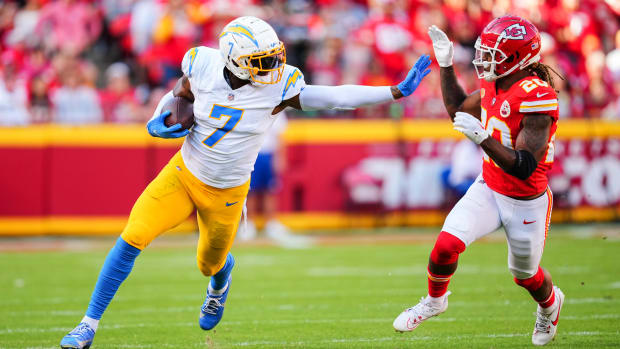Going Up: Do Bears Have Scoring Solution for Inside Red Zone?
An offseason of talent acquisition has only marginally increased the speed of the Bears on offense.
Instead it's done something else to help them solve one of their greatest problems: The red zone. There's no doubt this was a huge area of concern.
"Just as an offense in general, we need to score more points that's where I look at right there," Matt Nagy told the media when the 2019 season ended. "Everybody. I need to be better, our players execution-wise at times need to be better.
"You look at some of the things specifically, I look at the red zone. Some of the struggles we have had this year in the red zone. That's where you get your points. I don't want field goals, we don't want field goals. You have to score touchdown."
The Bears have an answer to the red zone, in part by taking it to another level quite literally. They've made a taller offense more capable of beating defensive backs in one-on-one battles within the red zone
Last year the Bears finished 24th in touchdown percentage in red zone trips. Mitchell Trubisky's passing statistics were abysmal in this part of the field.
Trubisky was 28th in completion percentage within the red zone at 50.82%. He was 29th in touchdown percentage on passes thrown inside the 10-yard line (43.75%) among passers with at least 10 attempts in that part of the field.
Trubisky threw four interceptions inside the red zone. It tied him for the league lead with San Darnold.
The Bears had two tight ends who caught touchdown passes in the red zone, Jesper Horsted and Ben Braunecker with one each.
Even wide receiver Allen Robinson—who jumps out of the stadium and is 6-foot-2 with long arms—had troubles in the red zone. Although he led them with six red-zone touchdown catches, he caught only 55% of the throws (11 of 20) his way in the red zone. It tied him for 19th in reception percentage among receivers with at least 10 red zone catches.
Robinson obviously should be a good red-zone target, which only falls back on what kind of a season his passer had at finding his red-zone targets.
This can't happen, and it's why they have tried to totally gut their personnel group at tight end.
To fix this, the Bears:
- Traded for Nick Foles, who stands 6-6.
- Signed tight end Demetrius Harris, who is 6-7 and at his best in the red zone.
- Signed tight end Jimmy Graham, who is 6-7.
- Drafted tight end Cole Kmet, who is 6-6.
- Signed basketball player Darion Clark, who is 6-7.
- Signed Kentucky undrafted free agent wide receiver Ahmad Wagner, the former Iowa basketball player who is 6-5 and might be a tight end because he weighs 232 pounds. Whatever position he's at, he was a matchup problem for college defensive backs with 15 total pass interference penalties drawn, including 12 last season.
- They also still have 6-6 tight end Adam Shaheen on the roster, although his fate has yet to be determined.
Foles has been largely a backup, but in 2017 he got in enough regular-season games to gain meaningful statistics and the only quarterbacks with at least 15 attempts inside the 20 who had a better completion percentage within the red zone than he did (63.2%) were Drew Brees, Carson Wentz and Aaron Rodgers.
With this kind of height for passers and receivers, the Bears should be throwing the ball high up above the rim often, so to speak.
They can keep it up in the clouds above shorter defensive backs for a better chance at completions within the red zone, or also in short-yardage and third-down situations.
Or else they could play one heck of a 1-3-1 half-court zone trap.
Twitter: BearDigest@BearsOnMaven




